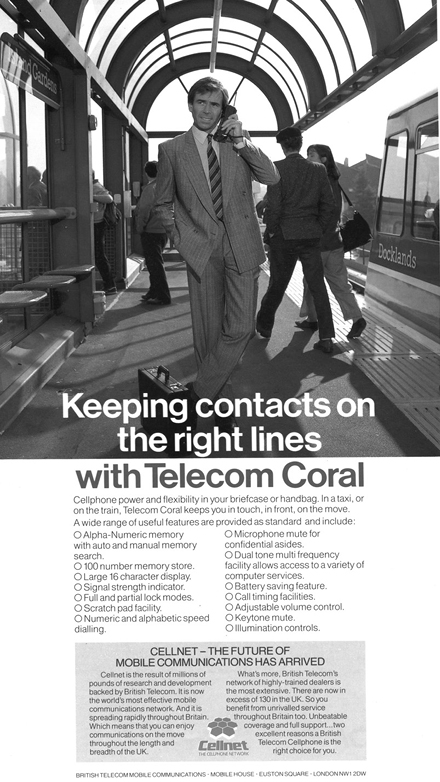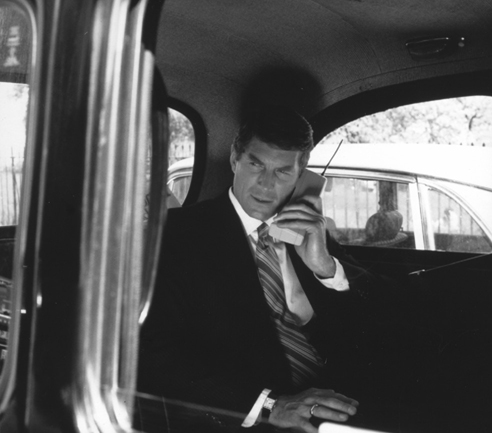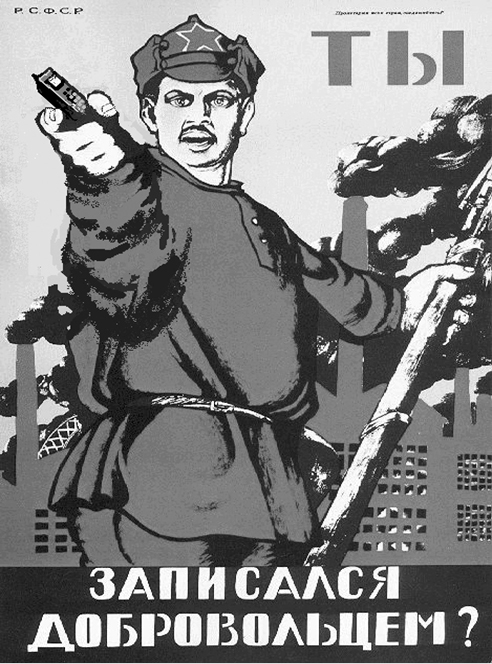Authors: Jon Agar
Tags: #science, #engineering and technology, #telecommunications, #electronics and communications, #telephone and wireless technology, #internet, #mobile telephones
Constant Touch (6 page)
But Mercury, competing with British Telecom on the fixed-network telephone service, would provide a poor demonstration of the powers of market capitalism. The leviathan British Telecom retained a
de facto
monopoly over the landlines. Instead mobile telephony became politically hot: since cellular systems would be introduced from scratch, then British Telecom would be on a level playing field with competitors.
In 1982, the government announced that two
analogue cellular licences were up for grabs. As an extra hobble, British Telecom was told that a submission would not be welcome directly, only in the form of a joint bid in a minority partnership. Intensely annoyed, but unwilling to yield a promising area of telecoms business, British Telecom combined with the private security firm Securicor. (Securicor was doing very well in the Thatcher years, and therefore had the money to risk, but it was also an experienced user of private mobile radio.) This service, operating under the name âCellnet', was guaranteed the first licence. The second licence was won in December 1982 by a consortium led by the unusually market-oriented defence electronics firm Racal, and inspired by Gerald Whent, then chairman of Racal's Radio Group. Other partners included Millicom, which had operated cellular phone systems in the United States â including a test-rig around Rayleigh-Durham, North Carolina as early as 1981. Racal's group decided to trade under the name âVodafone'.
A committee, the Joint Radiotelephone Interfaces Group, on which all the governmental and business parties were represented, decided which cellular standard to adopt. The Nordic NMT was rejected because it would not provide enough capacity for central London. Other possibilities were ruled out for being either proprietary or unproven. In common with much policy during the Thatcherite 1980s, eyes turned to America for inspiration.
The American AMPS was a proven standard and would have been ideal, but it operated at frequencies already occupied in the UK. So a tweaked standard based on AMPS, rather grandly called Total Access Communications System, or TACS, was quickly agreed.
The first cellular phone call in the United Kingdom over the new service was made on New Year's Day 1985, fittingly from St Katherine's Dock in the City of London to Vodafone's headquarters in Newbury, 50 miles west in the Berkshire countryside. (One of the callers was the comedian Ernie Wise.) Cellnet launched in the same month. However, neither Cellnet nor Vodafone was an instant success. In a final desperate, and successful, appeal to market forces, a further layer of competition was introduced. Service providers, small entrepreneurial firms, took over the task of selling cellular phones to the public. With the instincts of a barrow-boy trader, these easy-come, easy-go firms aggressively pushed mobile phones to punters. Some private fortunes were made. Many providers would later be swallowed up into more respectable groupings, such as Carphone Warehouse and Hutchison Telecommunications. But by then the cellular phone provided a growing business for Vodafone and Cellnet, and symbolised the 1980s ethos of competition. The brick-like cellphone clasped to the ear became part of the conspicuous consumption exhibited by the City high-flyer â in cliché, the trappings of the yuppie.

A
young urban professional uses a Telecom Coral cellular phone as a driverless train arrives on the Docklands Light Railway. The chunky mobile phone and the development of the Canary Wharf site in East London were entwined symbols of the Thatcher years. (BT Archives)
The
marketing of mobile phones in the 1980s was aimed squarely at businessmen and women. The following exhortation from 1986, from the instructions issued to the sales force of British Telecom Mobile Cellphones, is especially revealing:
Turning Idle Time into Productive Time
When you're away from your office and your phone, you're effectively out of touch with your business. You can't be contacted. Nor can you easily make contact yourself. Take a mobile telephone â a Cellphone â with you and you get a double benefit. You're totally in touch, ready to take instant advantage of business opportunities when and where they occur.
And
you can make maximum effective use of âdead time' â time spent travelling â turning it into genuine productive hours.
A society in constant touch was partly created by this economic rationale of squeezing in ever greater quantities of productive work. Resurrecting âdead time' â the phrase could equally well refer to time spent with family or at leisure â and reclaiming it in the service of capital.

The end of âdead time'. A businessman is still at work while taking a London black cab, 1985. (BT Archives)
In 1989, competition for three more licences was announced. While it was hoped that these services, called Personal Communications Networks (PCN), would be highly distinctive â more downmarket than
TACS, cheaper than the GSM under way across the English Channel â in fact, they were to all intents and purposes indistinguishable. (The PCN proposals were loathed by the continental Europeans. It was seen by the Germans and French, in particular, as an affront to the spirit of European cooperation represented by GSM. The Eurosceptic Margaret Thatcher was happy with this divergence.) Only eight PCN bids were received. It was by sheer chance that the bidding for the untried PCN and the potentially lucrative German GSM licences coincided, and many international firms understandably concentrated on the surer bet. One
licence was already promised to Mercury (in fact a grouping of Cable & Wireless, Motorola and the Spanish telecoms monopoly Telefónica), so that it could continue in its efforts to compete with British Telecom. Mercury's service was called âOne 2 One'. The other two winners were consortia called Microtel and Unitel. The losing consortia included some of the big names of British electronics, such as GEC, Ferranti (in the form of a spin-off, Ferranti Creditphone) and an innovative private telecoms company based in Hull, Kingston Communications. In 1991, a bewildering sequence of changes in consortia ownership led to just two groupings: a merged Mercury and Unitel, owned by Cable & Wireless and US West and offering One 2 One; and Microtel, owned by Hutchison and the defence firm British Aerospace (BAe), soon to rename itself âOrange'.
Mercury One 2 One launched in London in SepÂtember 1993. So when Orange followed in April 1994, four different cellular phone services were available to customers in the United Kingdom. While the two older analogue TACS services (Vodafone and Cellnet) and the two newer digital PCN systems (Orange and One 2 One) were technically distinct, the service was very similar and the consumer could make little technical distinction between the four. (Indeed, all were digital after the mid-1990s.) The result was intense competition based on billing packages and sharp advertising. A revolutionary shift
came with the offering of âpay as you go' packages, which were simple, required no credit check and were anonymous. One 2 One offered off-the-shelf packages with pre-charged batteries â ideal as a gift or for those daunted by complex tariffs. Vodafone promised âPay as you talk'. Many of the deals were stoked by the marketing tactic â reprehensible in the view of many continental Europeans â of selling telephones at very low prices, subsidised by airtime revenues.
But marketing was not driven only by price. While all the network operators invested heavily in advertising, it was Orange that made the early running, building a trusted brand with a catchy slogan â âthe future's bright, the future's Orange' â and breezy, amiable ads. Orange also boasted per-second billing and â most important for the fashion-conscious urbanite of the early 1990s â sleeker Nokia phones. The other operators took time â and money â to catch up. Star celebrities helped sell phones. So, in 1996, the supermodel Kate Moss was wishing for a âone to one' with the young Sun Sessions-era Elvis Presley. (Orange had commissioned extensive public opinion research from the Mori polling organisation, and had discovered that Elvis was âone of the most popular famous people'.) Meanwhile, all four networks piled on new clients. By the summer of 1994, One 2 One had connected its 100,000th customer; the millionth signed up in January 1998, the 5Â millionth in April 2000, and the 9 millionth by 2001.
Cellnet passed 100,000 in 1988, 1 million in 1994 and 11 million by 2002 (by which time the old BT spin-off had puffed itself up with the groovier name âO
2
').
Once the expensive business of rolling out the cellular network infrastructures â the base stations, switches, microwave links and so on â had been completed, the revenue from customers rolled in. The cellphone companies soon became industrial giants. In August 1999 One 2 One, less than a decade old, was bought by Deutsche Telekom, becoming part of the worldwide T-Mobile roster of networks, for £8.4 billion. (âT-Mobile' was a contraction of DeTeMobile, the name that had been given to Deutsche Telekom's mobile activities in 1993.) Anglo-German commercial interchange continued the following year when Vodafone, less than two decades old and already combined with the American AirTouch Communications, acquired the German technology and media giant Mannesmann, making it one of the largest companies in Europe and one of the top ten companies, measured by market capitalisation, in the world. As part of the same deal, Mannesmann sold Orange (which it had snapped up in 1999) to France Telecom. By 2001 Vodafone had become an international player, with over 80 million customers across the world. Furthermore, Vodafone symbolised another significant shift: for anyone following British industry for much of the 20th century, the idea of a British firm buying a major German technology-based company would
have seemed laughable. But Vodafone's share price, riding a wave of tech-stock enthusiasm, gave it immense purchasing power. However, as we shall see, the market can go down as well as up.
Competition between One 2 One, Orange, Cellnet and Vodafone had brought prices down and made the mobile phone an everyday object. No longer was it a status symbol â signifying privilege in the 1950s or wealth in the 1980s â but instead the universal accompaniment of young and old alike (although particularly the young). As the mobile trickled down the social scale, it became a great leveller: granting the power of mobile communication and organisation to the shifting, roaming crowds. A population in constant touch.
Indeed there was an ironic twist in the levelling powers of the mobile phone in 1992. In August, the tabloid
Sun
newspaper devoted ten pages to a taped conversation between Diana, Princess of Wales and James Gilbey, revealing the two to be lovers. The royal marriage, already strained, was in tatters. In December, the same month that Windsor castle burned, the prime minister, John Major, announced the divorce of the Prince and Princess of Wales to the House of Commons. The source of the
Sun
's revelations, the âSquidgy' tapes, so called after Gilbey's pet name for Diana, had been recorded by eavesdropping on a conversation over the princess's mobile phone. It was a sign of a major scandal to come.
Decommunisation = capitalist power + cellularisation
In
1920 Vladimir Ilyich Lenin, leader of revolutionary Russia, surveyed a country ruined by civil war and racked by starvation, and confidently announced that progress was assured through the rapid construction of a technological network. His slogan was pithy: âCommunism is Soviet power plus the electrification of the whole country.' With the fall of communism across central and eastern Europe seven decades later, the nascent liberal democracies were blessed with a small army of economic advisers from the West. Their mantra, heard loudest in Lenin's homeland, called for the unleashing of entrepreneurial activities, the rapid privatisation of state-owned industries, and the opening of markets to foreign companies. Following close behind the economists were Western cellular phone companies.

Did you join the network? (With apologies to Dmitry Moor)
We have already seen how mobile phone systems were built in former East Germany as a way of providing communication services without relying on obsolescent landlines. However, the rise of capitalist power in Russia did not coincide with the cellularisation of the
whole
country. Not only was it too vast, but socialist ideals such as universal coverage had been abandoned. A
condition of gaining a licence, such as those enabling US West and Millicom's services in Leningrad and Moscow (both from 1991), was that local partners were involved. In the capital, licences were granted, sometimes in return for cash donations to the local powers-that-be, for a number of different standards â yet again the
style of technological system was being shaped by political context, in this case the turmoil and confusion of post-Soviet Moscow government. At one stage Bell Canada thought it had won a GSM licence, but then backed out when a surprise demand for $50m was made. Likewise, as Garrard records, it was to the âconsternation of operators that had received NMT450 or GSM licences [that] AMPS licences were announced for Moscow and three cities in the East of the country'. One of the Moscow licences went to a consortium led by the Cold War defence giant Vimpel. In 1996 VimpelCom, founded by Vimpel's Dmitry B. Zimin and American investor Augie K. Fabela II, became the first Russian company listed on the New York Stock Exchange. âBee-line', VimpelCom's mobile brand, symbolises a new Russia, in which Western investment has put flesh on old Cold War bones.
Likewise in China, the transition from communism to some form of capitalism was reflected by the spread of mobile base stations. Chinese cellular telephony started in 1988 with a TACS system (i.e. the British standard) in Beijing, Shanghai and Guangdong province. Two companies, China Mobile and China Unicom, offered increasingly popular GSM-based services in the 1990s. By 2002, China had become the number one mobile country: there were 160 million subscribers, overtaking the United States. Measured by percentage of population, of course, the picture looked somewhat different (only
just over 12 per cent of Chinese, compared to nearly 38 per cent of Americans, had cellphones). The potential size of the Chinese market was clearly huge.
However, Western companies attracted by the market often met a rocky reception. It took nearly a decade of lobbying, for example, for Qualcomm to gain permission to supply a CDMA network to China Unicom, negotiating past tricky moments in ChinaâUS relations, such as the bombing of the Chinese embassy in Belgrade in 1999 and the ramming of an American spy-plane by a Chinese jet in 2001. But Qualcomm's determination seems to have paid off, and the company hopes to follow Ericsson's example: the firm's biggest market is in China, not Europe or the United States.
